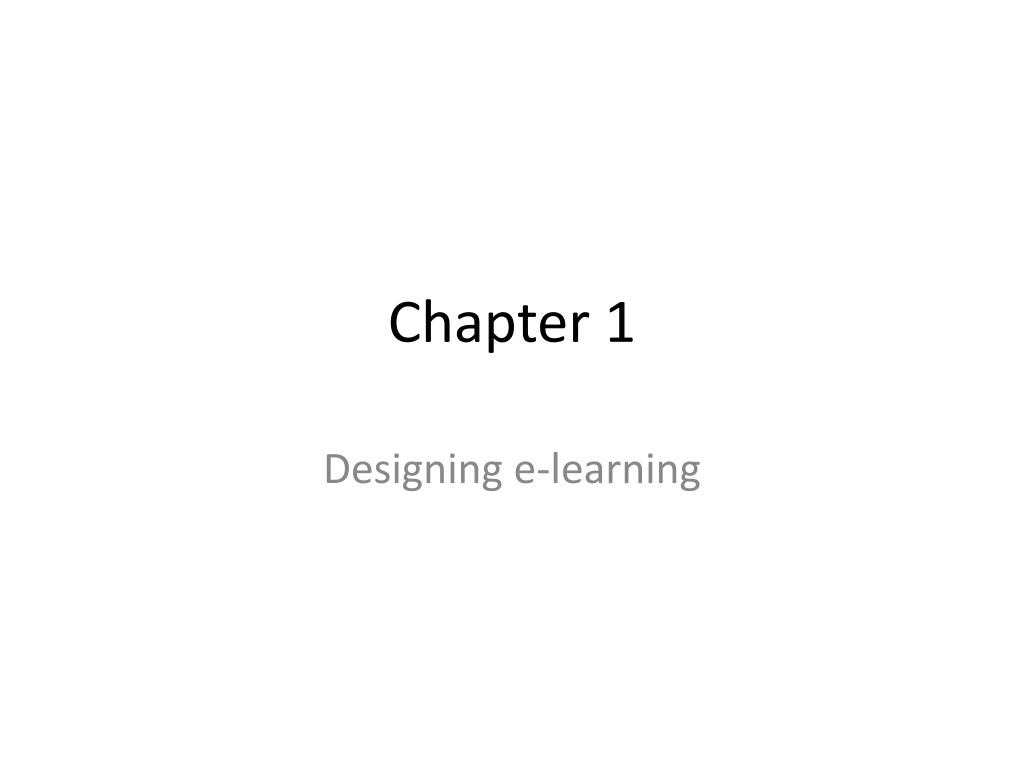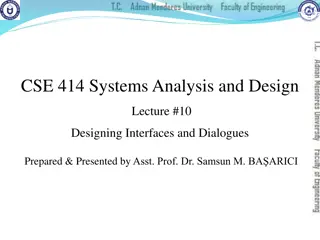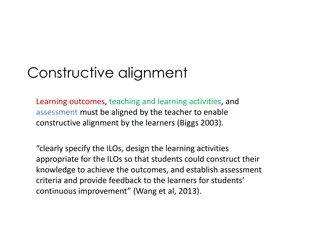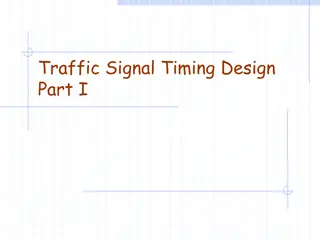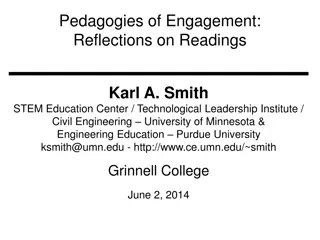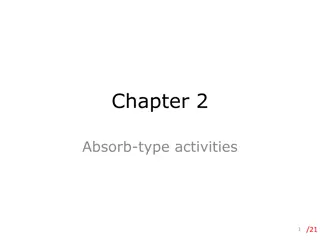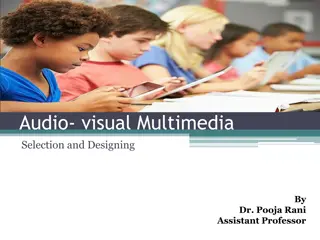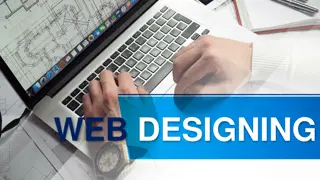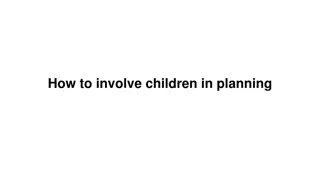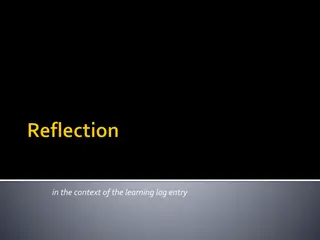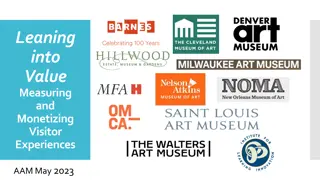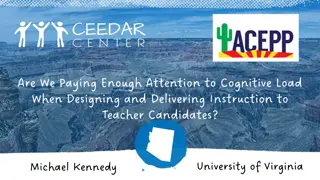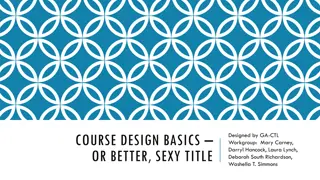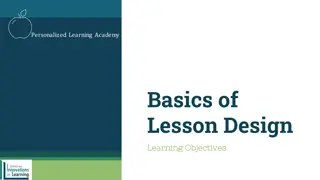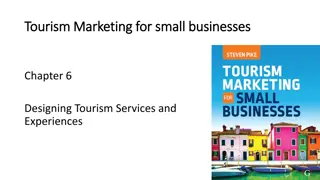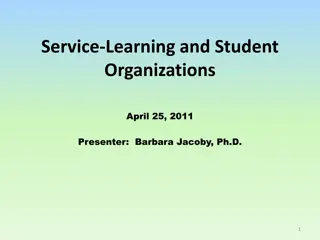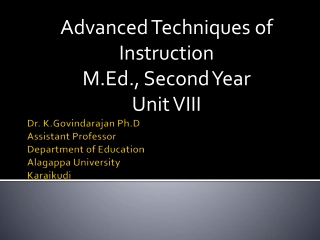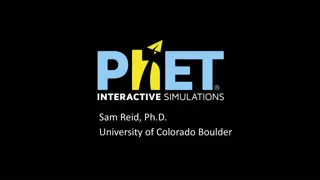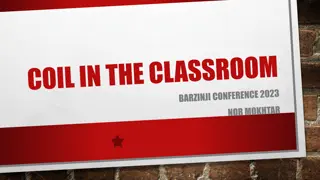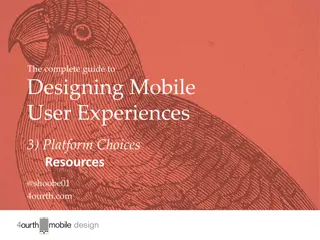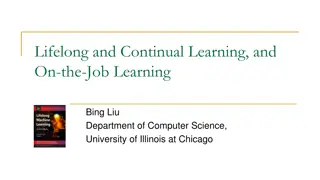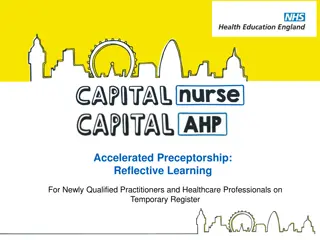Essential Steps in Designing E-Learning Experiences
Designing e-learning involves defining e-learning, understanding the range of online experiences, exploring varieties of e-learning, discussing instructional design, and following general steps like setting goals, analyzing learners' needs, and identifying what to teach. The process includes defining goals, analyzing learners' needs, and selecting appropriate teaching strategies and content.
Download Presentation

Please find below an Image/Link to download the presentation.
The content on the website is provided AS IS for your information and personal use only. It may not be sold, licensed, or shared on other websites without obtaining consent from the author. Download presentation by click this link. If you encounter any issues during the download, it is possible that the publisher has removed the file from their server.
E N D
Presentation Transcript
Chapter 1 Designing e-learning
Definition of e-learning E-learning is the use of electronic technologies to create learning experience.
The Range of Online Experience A course with some on-line elements A Hybrid Course A course taught entirely on line
Varieties of e-learning 1. Standalone courses (taken by solo learner) 2. Games and Simulations 3. Mobile Learning 4. Social Learning 5. Virtual Classroom Course
What is instructional design? ID includes Goals Teaching strategies Content Technology choices
General Steps 1. Identify your main goals (Goals of the course- based on standards, curriculum- ) 2. 3. 4. Analyze learners need (what type of students?) Identify what to teach (based on your experience and #1) Set learning objectives (Goals of the lesson- more specific than goals) 5. Identify prerequisites 6. Pick the approach to meet each objective (general approach for each objective (e,g,. Group/individual Written/practical active/passive ) 7. Decide the teaching sequence of your objectives 8. Create objects to accomplish objectives A. Create tests B. Select learning activities C. Choose media
1- Identify your main goals Types of goals 1. Financial 2. Intellectual (educational) 3. Costumers 4. Employees 5. Operations (improving efficiency) 6. Reputation
2-Analyze learners need 1. 2. 3. 4. 5. 6. 7. 8. 9. 10. Learning conditions 11. Locus of control 12. Style of prior education 13. Digital fluency Motivation for learning Psychomotor skills Attitude and mindset Mental discipline (ability to recognize and respond wisely) Communication skills Social skills Talents and intelligences Media preferences Background knowledge and experience
3- Identify what to teach (Education) 1. Identify essentials (curriculum and standards) 2. Analyze the gap between real and ideal performance (what they need for their future job) - [Design for how People Learn (2012), by Julie Dirksen.] 3. Analyze How people learn (learning theories) Telling Ain't Training 2nd editionBy Harold D. Stolovitch, Erica Keeps 4. Ask those who should know (best practices online resources BUT don t blindly copy) 5. Analyze critical incidents (academic failures) 6. Don t let the content committee decide (don t blindly follow them. Rely on your own experience and abilities)
3- Identify what to teach (other organizations) 1. Identify essentials (give them a task to see what they need and what they don t need give them resources and let them work together , let them get help from the expert and the internet) 2. Analyze the gap between real and ideal performance (difference between novice and expert behavior, between successful and unsuccessful work) 3. Analyze How the work is done (goals, jobs, tasks, decisions, and actions) 4. Ask those who should know (those who have directly observed the learners or workers) 5. Analyze critical incidents (work incidents) 6. Don t let the content committee decide (don t blindly follow them)
4- Set learning objectives Very important (from objectives we identify prerequisites, learning activities, and tests) Has 3 parts Intent (What will be learned) Learners (target learner)??? Prerequisites (skills, knowledge, attitudes) Intent = The student will understand the concept of the Derivative. Learners = 8th grades, students who already finished their ch 6 projects. Prerequisites= Given 4 theorems that he/she has never seen, the student will formulate a proof for each theorem by drawing on elements from previous sources and will rate them together to form a pattern proof with 80% accuracy.
Good Objectives Clear Specific Worthy
Primary and secondary objectives Primary Create (has to be original; not from scratch; could be an object, a concept, a plan) Decide (Yes/No- Accept/Reject- How many- How much- which one - going beyond following procedures / making judgment) Do (performing a procedure without having to make decisions, procedures could be mental or physical) Secondary Know (recall, knowing how to find, knowing how things work) Believe (the learner is convinced that ) Feel (how students will feel about )
Question Answering a multiple choice test is a Know or a Decide objective? Create a website account using Weebly. Is this a Create or a Know objective?
Synonyms Primary Create (build, design, draw, compose, synthesize, author, pen, conceive, form, formulate, invent) Decide (choose, pick, select, rate, rank, prioritize, vote, resolve, judge, conclude, differentiate, discriminate, filter) Do (perform, operate, act, construct, build, carry out, accomplish, arrange, complete) Secondary Know (understand, recall, remember, appreciate, be informed, comprehend, recite, cite) Believe (have faith that, trust, rely on, accept, affirm, think that, be convinced, expect, deem, maintain, presume, assume) Feel (sense, suffer, experience emotions)
5- Identify prerequisites Identify your high value objectives You may need to create a lower-level objective to serve as pre-req for the top level Identify what each objective requires List prerequisites Eliminate unnecessary objectives Say no to know objectives Don t forget feel objectives
6- Pick the approach to meet each objective 1. Standalone e-learning 2. Games and simulations 3. Virtual-classroom e-learning 4. Physical-classroom learning 5. Coaching (mentoring-tutoring) 6. Referring to learning resources 7. Searching online resources 8. Interacting with a social network 9. Letting learners find the solution on their own 10. Changing external factors (in some organizations, often, the best way to meet an objective is not learning or information- Campus online security)- 11. Blending if necessary
7- Decide the teaching sequence of your objectives Bottom up (teach basics first then show the whole picture) Top down (show the whole picture first, then teach details) Sideways (learners choose how to start and continue)
8- Create objects to accomplish objectives A learning object is a chunk of electronic content that can be accessed individually and that completely accomplishes a single learning objective and can prove it.
Learning Objects May contain text, graphics, animation, video, voice, music, and other media Can be accessed individually through a menu, search engine, or just a Next button Appears to the learner to be separate from other objects The completely accomplishes a single learning objective Contains the means to verify that the objective was met. Can serve multiple purposes and may contain other learning objects.
Turn objectives into learning objects Each objective leads us to create a learning object that completely accomplishes the learning objective and can prove it. The objective is the starting point, the end point, and a constant reference when designing the object. Anything that does not contribute to accomplishing this objective should be omitted immediately.
Create Tests Tests clarify the objectives You can use tests to pre-test learners Test is the best guide to designing learning activities Tests can serve as learning activity Tests can guide you in the development of content
Select learning activities Select learning activities
Select learning activities To accomplish learning objectives, we typically require 3 types of learning activities: Absorb Do Connect
Absorb activities Reading text Watching animation Listening to narration Learner is physically passive but mentally active
Examples of Absorb Presentations Readings Stories by the teacher Field trips
Do activities Practice a procedure Play a game Answer questions The learner practices, explores, and discovers
Examples of Do Practice by applying their skills Discovery (experimenting and exploring) Games and simulations ( discovery in a safe environment, gain insight, and confidence)
Connect activities Connect what they are learning to their work, their lives, and their prior knowledge
Examples of Connect Ponder (stop and think about the subject more broadly and deeply) Questioning (let learners ask questions and obtain answers to their individual questions) Stories told by students (requires learners to share their experiences) Job aids (checklists, manuals, glossaries, calculators, templates, models) Research (identify learning resources on their own)
Summary of step 8 (creating objects) 1. Start with objectives 2. Consider 3 types of activities (Absorb, Do, Connect) 3. For each type describe the actual experience 4. Specify the order of the activities
Choose Media Each object may require a different mix of text, graphics, sound, voice, music, animation, and video. What medium is essential to accomplish my objective? What medium could you not do without?
Compare ADDIE with Hortons model ADDIE Horton Analyze Analyze Design Design Develop Implement Build Evaluate Test
